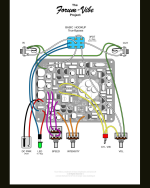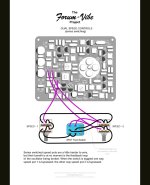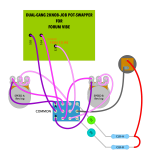Solder of Destiny
New member
Hello. First time posting here. I can't find info on this that I can understand. So I have built a Forum Vibe with two speed pots and a 3PDT switch to switch between the two pots. I want to add a bicolor LED that will indicate both LFO speed and change colour depending on which speed pot is "on". Can anyone help?
General context: I've built a few pedals but my electrical knowledge is limited and I can't really read schematics...
General context: I've built a few pedals but my electrical knowledge is limited and I can't really read schematics...
Last edited:






